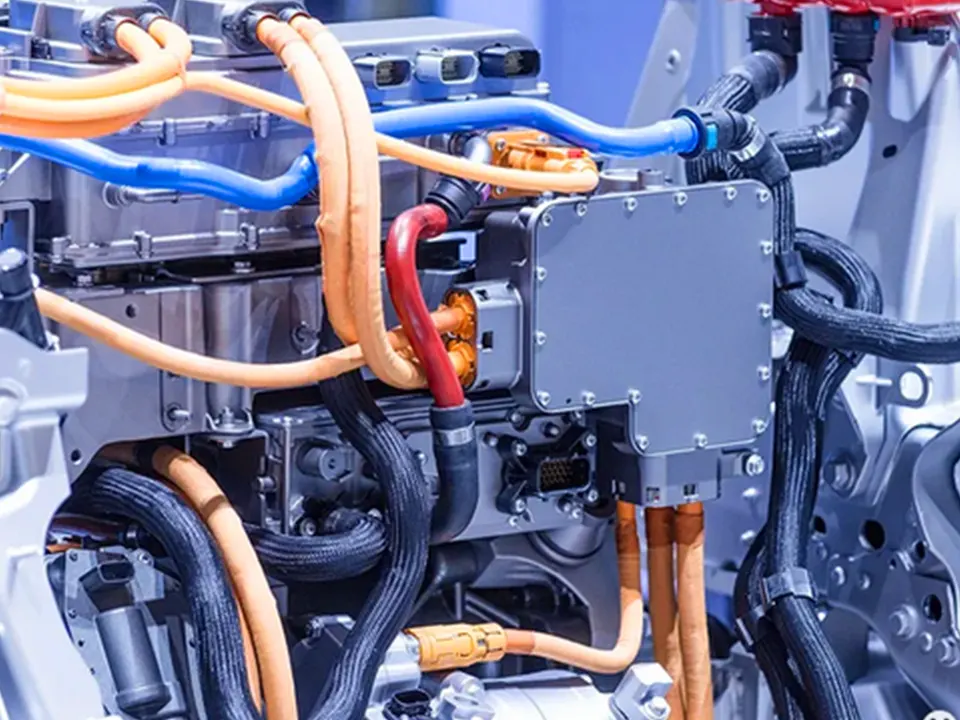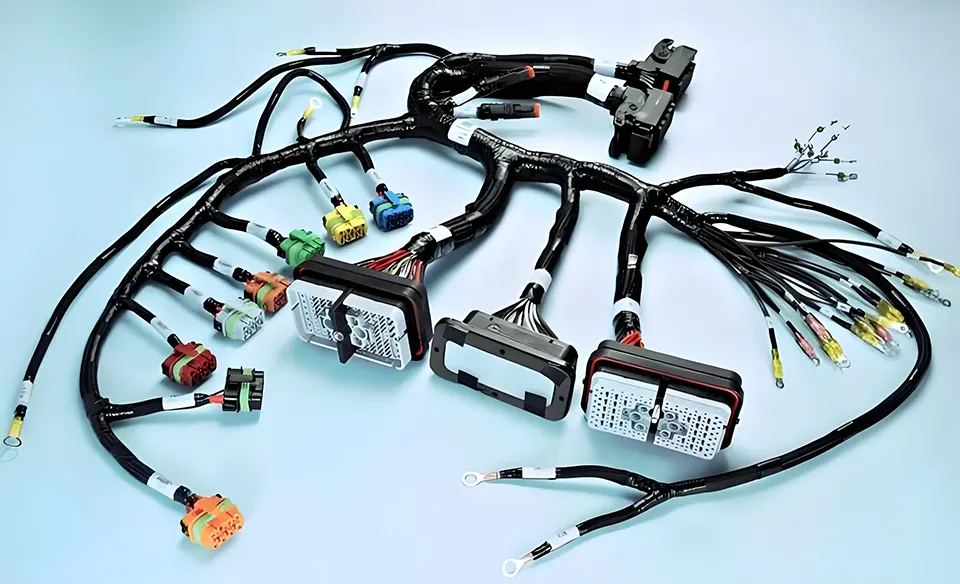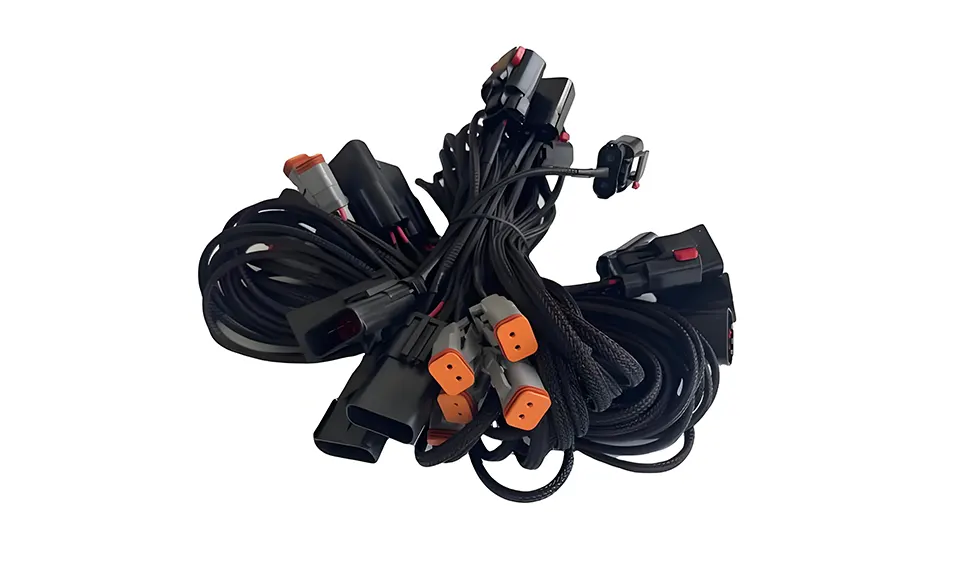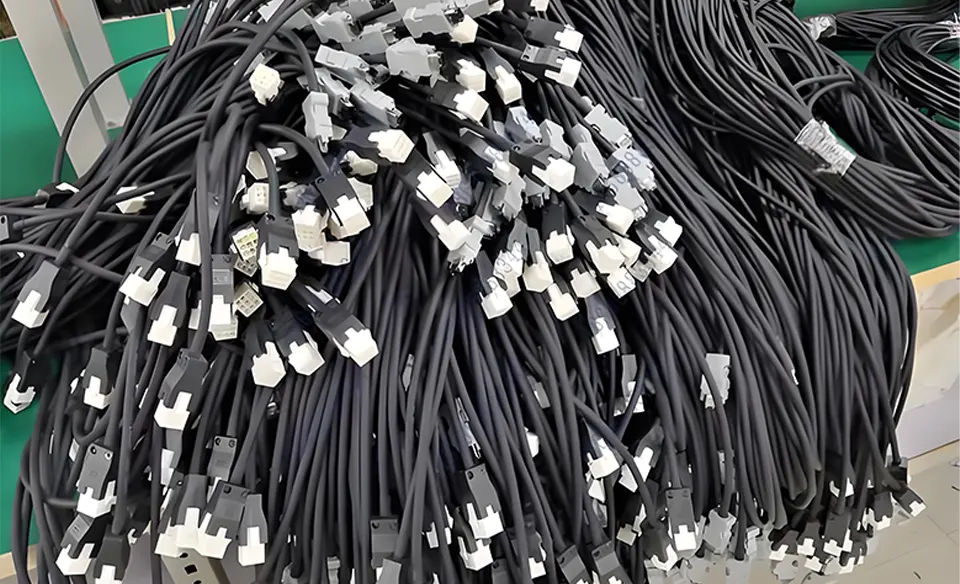Evolution of automotive cable standards
In the early 2000s, ISO 6722 began to become the global standard for unshielded single-core copper vehicle cables, although there are still many regional standards and OEM requirements, and those regional standards are still in use.
In 2001, ISO 14572 was introduced to deal with single-core and multi-core copper cables, including shielded and unshielded options.

ISO14572 references the single-core standard of ISO6722. In 2011, ISO 6722-1 was released, which is a revision of ISO-6722:2006.
In 2013, ISO 6722-2 was released to address aluminum conductors in unshielded single-core cables.
Nevertheless, emerging market (EV/HEV market) technologies still need a more comprehensive standard.
Higher voltages are used in EV/HEV technology, cable geometry and insulation material properties are affecting connector sealing, and cable flexibility is still becoming more and more important for application requirements and ergonomics.
ISO 19642 was published in January 2019, expanding and integrating ISO6722-1, ISO6722-2 and ISO14572 into one standard. 19642 is divided into 10 parts, covering terminology, test methods and dimensions, etc.
Regarding high-voltage copper cables (ISO19642 -5 and -9), the result of the merger is mainly minor modifications to the original standards. However, there are eight significant differences that affect high-voltage cables.

1. Cable deformation test defined "Compression set" is the tendency of the cable insulation layer to permanently deform due to pressure at high temperature.
This deformation can cause failure of the connector seal, allowing water or other materials to enter, which may cause electrical failure.
ISO 6722-1 contains a high temperature stress test procedure, but the only inspection standard is withstand voltage. There is no test or standard that addresses the amount of physical deformation under temperature and pressure.
ISO19642-9 retains the provisions of 14572, which defines the maximum deformation under a specified load at rated temperature. The requirement is to retain 40% of the original cable diameter, or 60% compression/deformation.
However, the test can be selected by the OEM, and the retention/deformation percentage standard can also be selected. To ensure the integrity of the cable/connector interface under operating temperature and pressure, some OEMs have established a minimum retention of 80% or a maximum compression/deformation of 20%.
Higher retention requires cable insulation with heat resistance. Many existing cable insulation materials cannot meet these higher retention standards.
2. Defined cable flexibility Cable flexibility is important for cable routing in confined areas, as well as for personal safety and ergonomics. Traditionally, "flexibility" is subjective and there is no quantitative standard.
IOE19642-5 and -9 define test methods and standards to define cable flexibility.
The procedure requires that a cable specimen be placed on top of two mandrels of specified size and distance, a third mandrel presses down on the specimen, and the force required to bend the cable a specified offset is measured.

3. Shielding Requirement Shielding is used on high voltage cables to minimize the radiation of electromagnetic interference (EMI).
The effectiveness of shielding can be an important factor in selecting high voltage cables. The shielding on high voltage cables is intended to reduce the transfer of cable interference to the environment where EMI can damage digital signals and electronic devices.
ISO19642-9 modifies the shielding effectiveness test requirements of 14572 and defines parameters for shield/shield DC resistance, surface transfer impedance, and two shield attenuation measures.
These tests are optional tests determined by the OEM and if required, standards must be set and existing shielded/shielded cable designs can be used to achieve these standards.
4. Abrasion resistance testing is required The abrasion resistance of the cable determines the service life of the cable when in contact with rough surfaces under dynamic motion or vibration.
Both ISO 6722-1 and 14572 have abrasion resistance testing as an optional test.
ISO19642-5 requires cables from 0.35mm2 to 6.0mm2 to meet one of two abrasion tests; sandpaper or scratch.
It is worth noting that the 0.13mm2 and 0.22mm2 sizes are included in ISO6722-1 but omitted in 19642-5.
5. High voltage gets higher ISO19642-5 and –9 address multiple high voltage options.
ISO6722-1 and ISO14572 define high voltage as only 600V (DC or AC). ISO19642 further defines high voltage as 600VAC/900VDC and 1,000VAC/1,500VDC.
Summary: ISO19642-5 better defines high voltage by adding a 1,000VAC/1,500VDC category.
The 1500V requirement has a lot of impact on the changes in cables, mainly reflected in the thickness of the sheath. For high-voltage connectors, the rated voltage of connectors in the industry is currently 1000V. If it is also increased to 1500V, we believe that the electrical clearance and creepage distance between the plug and cable end will not be a big problem. For the socket end, the electrical clearance between the mounting surface and the connection terminal will become larger.
6. Revised conductor requirements ISO 6722-1 allows three twisting options: Class A symmetrical, Class B asymmetrical, and Class C asymmetrical flexible.
The size of the strands, the number of strands, and the maximum resistance are defined. However, the conductor cross-sectional area (CSA) is not defined. ISO 14572 refers to 6722-1 twisting.
This standard depends only on the conductor resistance because there is no standard for strand size. ISO 19642-5 reduces the stranding options to two. This change leads to improved standardization and consistency.
In sizes greater than 2.5mm2, the stranding option increases flexibility for all conductor categories. In addition, cross-sectional area requirements were added, resulting in more consistent cable sizes and working in conjunction with existing conductor resistance standards to ensure that all suppliers meet minimum copper content requirements.

7. Outside diameter tolerances become more explicit ISO 14572 mentions single-core and multi-core sizes and cable ovality, but the only standard is to meet customer requirements.
This has led to a variety of cable and connector sizes across the market, reducing cable and connector interoperability. In addition, suppliers are forced to support multiple part numbers.
ISO19642-9 provides recommended sizes for thin-wall and thick-wall single-conductor and multi-conductor cables; the maximum ovality is 10% measured immediately after extrusion.
8. Fluid resistance test procedure changes The development of ISO-6722, 6722-1, and ISO19642-5 has greatly changed the fluid resistance test procedure.
The procedure of ISO6722 is to immerse in the required fluid at 23°C for 20 hours, followed by winding and voltage testing.
ISO6722-1 established a new "Test Method 1" requiring immersion in the required fluid for 10 seconds and then heat aging at the rated temperature. Repeat 4 times.
The cumulative heat aging time is 1,000 hours, followed by winding and voltage tests. ISO6722-1 also allows the use of "Test Method 2" for materials placed on the market before ISO6722-1 was published.
This test method is the old ISO6722 procedure and standard and can be used by customer/supplier agreement.
ISO19642-5 retains the ISO6722-1 fluid procedure and removes the option to use the original 6722 20-hour immersion procedure.




